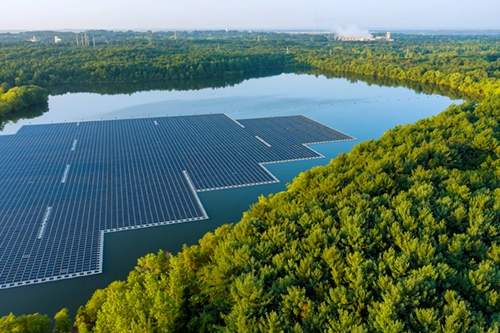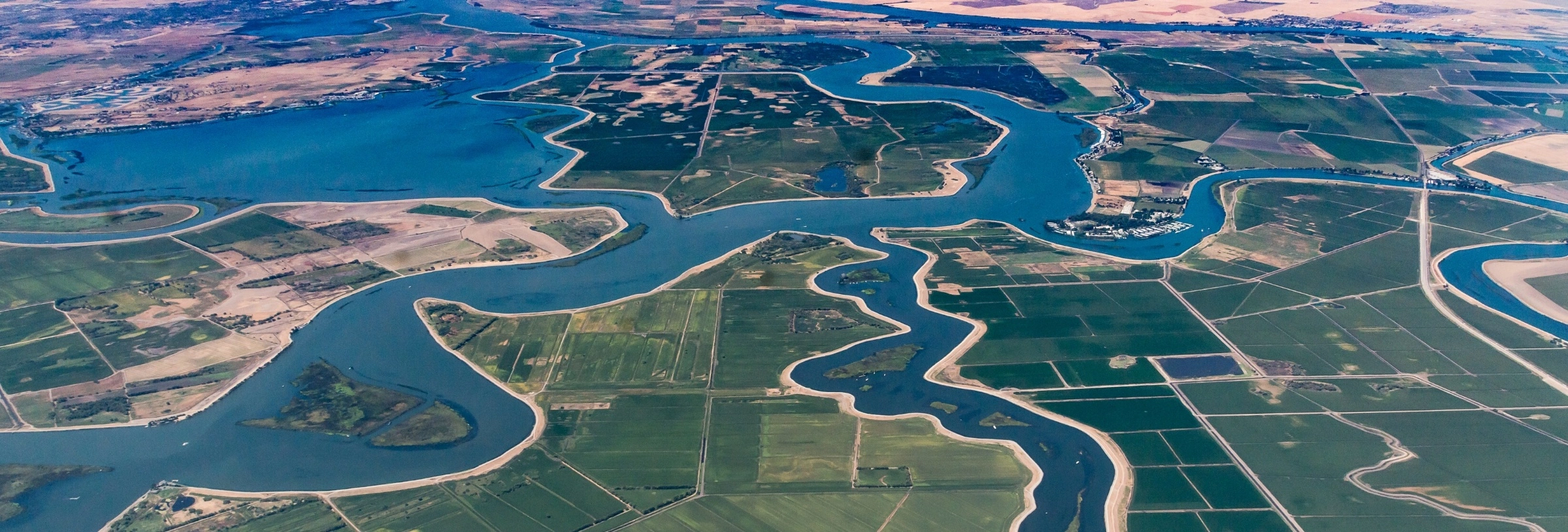
On April 4, 2024, Governor Newsom and the U.S. Bureau of Reclamation (Bureau) announced that the Bureau awarded California $15 million for the Delta-Mendota Canal floating solar project. The project, which is funded through President Biden’s Inflation Reduction Act, marks a key step forward for ‘floating solar,’ a technology that is billed as a win-win for the energy and water sectors.
Background
The core concept behind what has been dubbed as ‘floating solar’ is simple – providing both energy and water benefits by building solar panels on top of water canals. On the energy side, floating solar provides the same primary benefit as any other solar project utilizing existing infrastructure – avoiding the need to take land away from agriculture or other uses. On the water side, floating solar reduces water loss through evaporation by protecting the water from direct sunlight.
A study from the University of California, Merced (UC Merced) quantified these benefits if every canal in California was covered. It found that floating solar throughout California could produce 13 gigawatts of power and more than 63 million gallons (nearly 200,000 acre-feet) of water, which is enough power for nearly 10 million households per year and enough water for roughly 400,000-600,000 households per year.
Apart from the federal and state governments, the benefits of floating solar has also caught the attention of environmental groups. In July 2023, a group of more than 125 organizations, led by the Center for Biological Diversity sent a letter to the Bureau’s Commissioner and the Secretary of the Department of the Interior, relying in part on the UC Merced study, advocating for widespread adoption of floating solar.
The Delta-Mendota Canal Floating Solar Project
The Delta-Mendota Canal project that the Bureau is funding will be created by a partnership of the San Luis and Delta-Mendota Water Authority, the Bureau and UC Merced. It will study up to three different technologies and will act as a pilot project for the parties involved (as well as the State of California) to evaluate the best way to utilize floating solar going forward. The project will be developed outside of Los Banos.
Other Floating Solar Projects
While the Delta-Mendota project will be a pilot project, it is not the first project of its type. The first projects were developed internationally, with Japan and India taking the lead. In the U.S., the first project constructed will likely be in Arizona, which broke ground earlier this year on a project that was developed with the Gila River Indian Community. Further, on top of the Delta-Mendota floating canal project, the Bureau also announced that same day it would also be providing roughly $4 million to split between two other floating solar projects, one in Oregon and one in Utah.
California also has another pilot project under development. The Department of Water Resources (DWR) announced in 2022 that it was awarding $20 million to a project developed by DWR, the Turlock Irrigation District, UC Merced, and Solar AquaGrid. That project, which has been named ‘Project Nexus,’ expects to be completed in either 2024 or 2025.
Win-Win?
Floating solar shows a lot of promise and benefits. It represents the type of project that due to its spatial efficiency and environmental benefits could become ubiquitous to the point that nearly every canal in the state is covered. If everything works out, it could truly be a win-win for both the water and energy sectors.
However, there are legitimate concerns about floating solar. One is cost efficiency – the technology is more costly than traditional solar based on how they must be engineered. Similarly, a second concern is maintenance given the location of the panels. A third is environmental, as impacts from changes to water temperature and limited external access to the water bodies could cause issues for aquatic life.
Like any new technology, floating solar has some kinks to work out. Between Project Nexus and the Delta-Mendota Canal project, California has the opportunity to identify and ideally overcome those weaknesses. Moreover, it should be able to learn from other states, most notably Arizona (and Utah and Oregon). Assuming it can, floating solar may take over the state.
- Associate
Alex Van Roekel provides counsel to clients on state and federal water law issues, including compliance with statutory and regulatory requirements, litigation strategy in both state and federal court and public policy within the ...
California Water Views provides timely and insightful updates on the water sector in the state. We relay information on how water legislation and policy from the nation’s capital, Sacramento, and around the U.S. affect California’s water utilities, agencies, practitioners, and consumers. We also write about important events, conferences, legal cases, and other key happenings involving all things water in and around California.
Stay Connected
 RSS Feed
RSS Feed
Categories
- Clean Up of Groundwater & Contaminated Media
- Climate Change
- Coastal Development
- Construction
- COVID-19
- Dam Construction, Operation & Removal
- Desalination
- Environmental Protection Agency
- Events
- Government Administration
- Groundwater Management & SGMA
- Inverse Condemnation & Regulatory Takings
- New Legislation
- Oceans, Marine Life & Maritime Transportation
- Project Construction
- Projects
- Public Agency Regulation
- Recycled Water
- Regulatory Reform & Proposed Rules
- Right to Take
- Valuation
- Water Infrastructure
- Water Litigation
- Water Quality
- Water Rights
- Water Supply
- Water Utility Regulation

